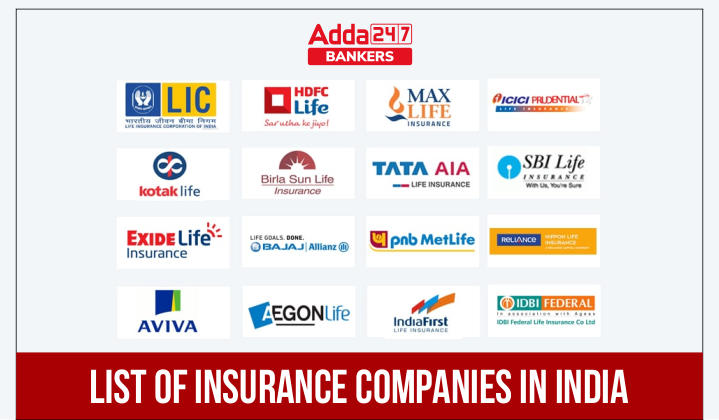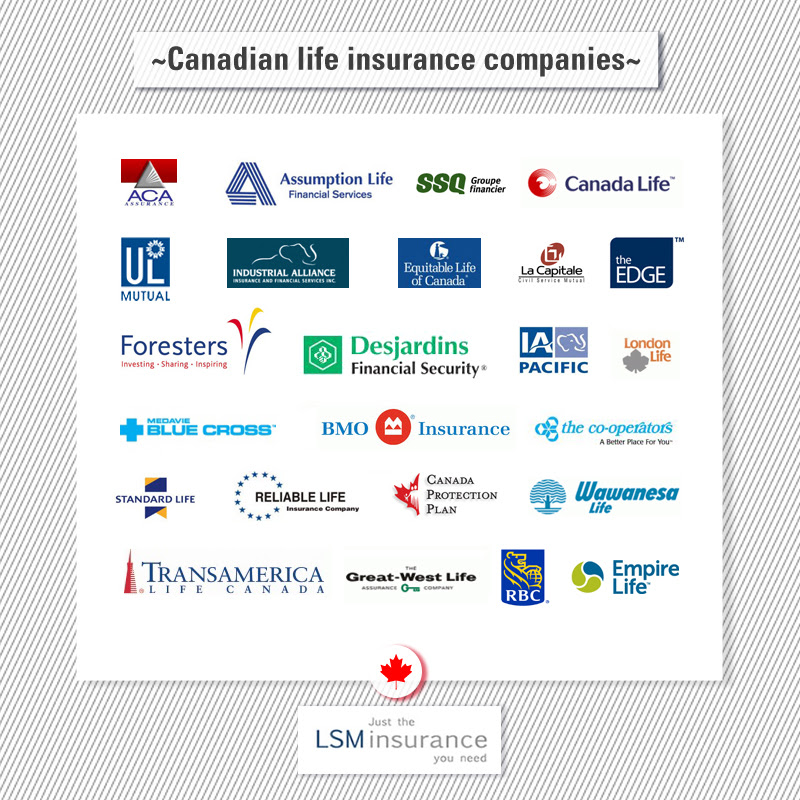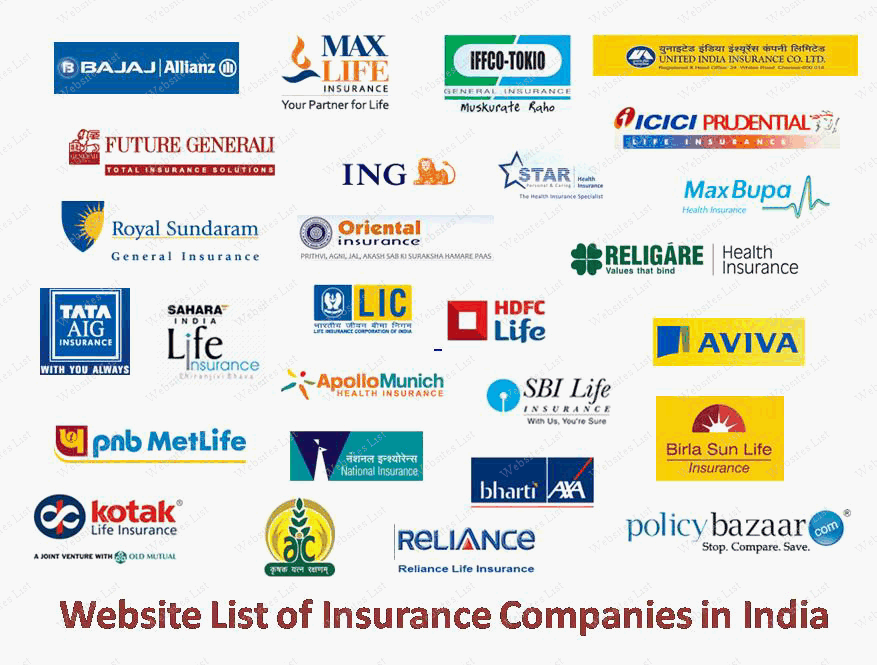In the fiercely competitive world of insurance, a company’s name is more than just a label; it’s a powerful brand asset that can shape customer perception, attract investors, and ultimately drive success. Choosing the right name for an insurance company requires a delicate balance of strategy, creativity, and legal acumen. From understanding industry trends to navigating the intricacies of trademark law, this comprehensive guide delves into the art and science of crafting a winning insurance company name.
We’ll explore the key factors that influence naming decisions, from target audience demographics and brand messaging to the impact of cultural nuances and global considerations. This exploration will shed light on the strategies employed by industry leaders and provide insights for entrepreneurs seeking to establish their own insurance brands.
Industry Overview
The global insurance industry is a massive and complex sector, playing a crucial role in mitigating financial risks and providing peace of mind to individuals and businesses. The industry is characterized by its dynamic nature, constantly adapting to evolving economic conditions, technological advancements, and changing consumer preferences.
Competitive Landscape
The insurance market is highly competitive, with a diverse range of players vying for market share. These players include traditional insurance companies, insurance brokers, and online insurance platforms. Competition is driven by factors such as pricing, product innovation, customer service, and distribution channels.
The insurance market is characterized by a wide range of competitors, each with its unique strengths and weaknesses. Traditional insurance companies often have a strong brand reputation and established distribution networks. Insurance brokers offer specialized advice and can help clients find the best coverage. Online insurance platforms provide convenience and transparency, allowing customers to compare quotes and purchase policies online.
Key Trends
The insurance industry is facing a number of key trends that are shaping its future.
Technological Advancements
The rapid pace of technological advancements is transforming the insurance industry. Artificial intelligence (AI), machine learning (ML), and big data analytics are being used to improve underwriting, pricing, and risk management. Insurtech companies are also developing innovative products and services, such as telematics-based insurance and on-demand insurance.
Digital Transformation
Digital transformation is another key trend, with insurance companies increasingly embracing digital channels to interact with customers. This includes online policy purchasing, digital claims processing, and mobile apps for customer support.
Changing Consumer Preferences
Consumer preferences are also changing, with customers demanding more personalized and convenient insurance solutions. This is driving the growth of niche insurance products and the development of new distribution channels, such as social media and mobile apps.
Climate Change
Climate change is posing significant challenges to the insurance industry. Extreme weather events, such as hurricanes and wildfires, are becoming more frequent and severe, leading to increased insurance claims. Insurance companies are responding by developing new products and services to mitigate climate risks.
Regulation
The insurance industry is subject to a complex regulatory environment, which is constantly evolving. New regulations are being introduced to address issues such as data privacy, cybersecurity, and climate change.
The insurance industry is at a crossroads, facing both challenges and opportunities. The companies that embrace innovation and adapt to changing market conditions will be best positioned for success in the years to come.
Branding and Identity

In the highly competitive insurance industry, establishing a strong brand identity is crucial for attracting and retaining customers. A well-defined brand not only differentiates an insurance company from its competitors but also fosters trust and loyalty among policyholders.
Importance of Brand Messaging
Brand messaging plays a pivotal role in shaping customer perception and building brand loyalty. It encompasses the key messages, values, and promises that an insurance company communicates to its target audience. Effective brand messaging should be consistent across all communication channels, including advertising, social media, and customer service interactions.
- Clear Value Proposition: Insurance companies should clearly articulate the unique value they offer to customers. This could include competitive pricing, comprehensive coverage, exceptional customer service, or innovative products.
- Emotional Connection: Insurance is often associated with risk and uncertainty. Successful brand messaging creates an emotional connection by emphasizing empathy, security, and peace of mind.
- Brand Personality: A distinct brand personality helps insurance companies stand out from the crowd. It can be reflected in the company’s tone of voice, visual identity, and overall communication style.
Brand Identity and Customer Perception
Brand identity significantly influences customer perception, impacting their decisions to choose one insurance company over another. A strong brand identity can lead to:
- Increased Trust and Credibility: A consistent and well-established brand builds trust and credibility, making customers more likely to perceive the company as reliable and trustworthy.
- Enhanced Brand Recognition: A memorable brand name, logo, and messaging increase brand recognition, making it easier for customers to identify and recall the company.
- Improved Customer Loyalty: A strong brand identity fosters customer loyalty, as customers are more likely to remain with a company they trust and feel connected to.
Examples of Strong Insurance Company Brand Names
Here are some examples of insurance companies with strong brand names that have successfully established a distinct brand identity:
- Geico: Geico’s memorable brand name and humorous advertising campaigns have made it a household name in the insurance industry.
- State Farm: State Farm’s focus on customer service and community involvement has built a strong reputation for reliability and trustworthiness.
- Progressive: Progressive has differentiated itself through its innovative approach to insurance, including its use of technology and its focus on personalized customer experiences.
Target Audience

Insurance companies cater to a diverse range of individuals and businesses with varying needs and risk profiles. Understanding the target audience is crucial for developing effective marketing strategies and tailoring products and services to meet specific requirements.
Identifying key demographics, understanding their needs and concerns, and crafting targeted messaging are essential for achieving success in the insurance industry.
Demographic Segmentation
Insurance companies typically segment their target audience based on demographic characteristics, such as:
- Age: Age is a significant factor in insurance needs. Younger individuals may prioritize life insurance and health insurance, while older individuals may focus on retirement planning and long-term care insurance.
- Income: Income level influences the affordability and type of insurance coverage individuals can afford. Higher-income earners may opt for comprehensive coverage, while lower-income earners may prioritize essential coverage.
- Location: Geographic location can impact insurance needs due to factors like natural disasters, crime rates, and local regulations.
- Family Size: Family size affects the need for coverage, such as life insurance for dependents or health insurance for multiple family members.
- Education Level: Education level can influence individuals’ understanding of insurance concepts and their ability to make informed decisions.
Needs and Concerns of Different Customer Segments
Different customer segments have unique needs and concerns. Understanding these variations is crucial for tailoring insurance products and services effectively.
- Individuals: Individuals may seek insurance for various reasons, such as protecting their income, providing for their families, or covering medical expenses. They may prioritize affordability, simplicity, and convenience.
- Families: Families have diverse insurance needs, including life insurance for income replacement, health insurance for children, and home insurance for property protection. They may value comprehensive coverage and financial security.
- Businesses: Businesses require insurance to mitigate risks, protect assets, and ensure business continuity. They may prioritize risk management, liability coverage, and business interruption insurance.
Tailoring Messaging to Different Target Audiences
Effective messaging resonates with the specific needs and concerns of the target audience. This requires a tailored approach that considers factors such as:
- Language: Use language that is clear, concise, and relevant to the target audience. Avoid technical jargon that may be confusing or off-putting.
- Channels: Choose communication channels that are most likely to reach the target audience. This may include online advertising, social media, email marketing, or traditional media.
- Content: Focus on the benefits and value propositions that are most appealing to the target audience. Highlight features and services that address their specific needs and concerns.
- Tone: Adjust the tone of messaging to match the target audience’s expectations. For example, use a friendly and approachable tone for individuals, while a more professional and informative tone may be appropriate for businesses.
Naming Conventions
Choosing the right name for an insurance company is crucial. A well-chosen name can communicate the company’s values, target audience, and brand identity, ultimately contributing to its success. This section delves into the key considerations when choosing a name, exploring the use of descriptive words, acronyms, abbreviations, and the impact of memorable or unique names.
Descriptive Words
Descriptive words provide a clear understanding of the company’s services and target audience. They often incorporate words related to protection, security, and financial well-being. Examples of insurance company names that use descriptive words include:
- Safeguard Insurance: This name clearly conveys a sense of protection and security.
- Family First Insurance: This name emphasizes the company’s focus on families and their needs.
- Financial Security Insurance: This name highlights the company’s role in providing financial stability.
Acronyms and Abbreviations
Acronyms and abbreviations can be effective in creating a concise and memorable name. However, they can also be challenging for customers to understand and remember.
- AIG (American International Group): This acronym is widely recognized and has become synonymous with the company.
- Cigna: This abbreviation is a combination of “Connecticut General Life Insurance Company,” which is now widely known simply as Cigna.
Memorable or Unique Names
A memorable or unique name can help an insurance company stand out from the competition. Such names often use creative wordplay, alliteration, or a distinctive sound.
- Geico: This name uses alliteration and a catchy sound to create a memorable brand identity.
- Liberty Mutual: This name evokes a sense of freedom and security, making it memorable and appealing to customers.
Legal Considerations

Establishing an insurance company involves navigating a complex legal landscape, with specific requirements for naming and operating. Understanding these legal considerations is crucial for ensuring compliance and minimizing potential risks.
Trademarking a Company Name
Trademarking a company name is essential for protecting its brand identity and preventing others from using a similar name that could cause confusion among customers. It provides legal rights to use the name exclusively, preventing competitors from adopting similar names that could dilute the brand’s value or mislead consumers.
“A trademark is a symbol, design, or phrase legally registered to represent a company or product.”
The process of trademarking involves conducting a comprehensive search to ensure the name is unique and not already in use. The application process requires providing details about the company, its products or services, and the mark itself. Once approved, the trademark is registered with the relevant authorities, providing legal protection for a specified period.
Legal Issues Related to Insurance Company Names
Several legal issues can arise in relation to insurance company names, including:
- Copyright Infringement: Using a name that is already copyrighted, such as a famous book title or song, can lead to legal action.
- Trademark Infringement: Using a name that is too similar to an existing trademark can result in legal action for trademark infringement.
- Misleading Names: Names that suggest a level of coverage or expertise that the company cannot provide can be considered misleading and subject to legal challenges.
- State Regulations: Each state has specific regulations governing the naming and operation of insurance companies, including requirements for capitalization, licensing, and financial stability.
- Federal Regulations: Federal regulations, such as the Dodd-Frank Wall Street Reform and Consumer Protection Act, also apply to insurance companies, including requirements for transparency and consumer protection.
Name Availability
Choosing the right name for your insurance company is crucial, as it will be the foundation of your brand identity and how customers perceive your business. Before you get too attached to a name, it’s essential to ensure its availability and that it doesn’t infringe on any existing trademarks.
It’s important to check for name availability to avoid potential legal issues and ensure a smooth launch for your business.
Checking Name Availability
You can check for name availability through several methods:
- Online Trademark Databases: The United States Patent and Trademark Office (USPTO) provides a free online database for searching trademarks. You can search for existing trademarks by name, logo, or goods/services. The USPTO also offers a Trademark Electronic Application System (TEAS) for filing trademark applications.
- State and Local Databases: Some states and local governments maintain databases of registered business names. Check with your state’s Secretary of State or your local government office for specific information.
- Domain Name Registrars: Domain name registrars, such as GoDaddy and Namecheap, allow you to check for the availability of domain names, which can be crucial for your online presence.
- Professional Trademark Attorneys: Consulting with a professional trademark attorney can provide comprehensive name availability searches and legal advice to ensure your chosen name is legally sound.
Implications of Using a Similar Name
Using a similar name to an existing company can lead to several issues:
- Trademark Infringement: If your chosen name is too similar to an existing trademark, you could face legal action for trademark infringement.
- Customer Confusion: Similar names can confuse customers and lead them to associate your business with the existing company, potentially damaging your brand reputation.
- Legal Costs: Defending against a trademark infringement lawsuit can be costly and time-consuming, diverting resources from your business operations.
Strategies for Finding Unique and Available Names
To find a unique and available name for your insurance company, consider these strategies:
- Brainstorming: Gather a team of stakeholders and brainstorm a wide range of potential names, focusing on s related to your target audience, services, and brand values.
- Wordplay and Creativity: Use wordplay, puns, or creative combinations of words to generate unique and memorable names.
- Thesaurus and Dictionary: Use a thesaurus and dictionary to explore different synonyms and related terms for s related to your business.
- Online Name Generators: Several online tools and name generators can provide suggestions based on specific criteria, such as industry, target audience, and desired tone.
Marketing and Communication

A successful marketing campaign for a new insurance company should be strategic, targeted, and focused on building trust and credibility. It should effectively communicate the company’s value proposition and differentiate it from competitors.
Marketing Campaign Design
A comprehensive marketing campaign for a new insurance company should include a mix of traditional and digital marketing strategies to reach a wide audience. The campaign should be designed to:
* Attract New Customers: The campaign should highlight the company’s unique selling propositions, such as competitive pricing, comprehensive coverage, and exceptional customer service.
* Build Brand Awareness: The campaign should focus on establishing a strong brand identity and creating a positive perception of the company.
* Generate Leads: The campaign should be designed to capture customer information and generate qualified leads.
* Drive Sales: The campaign should ultimately lead to increased sales and revenue.
- Targeted Advertising: Use online advertising platforms like Google Ads and social media advertising to target specific demographics and interests. For example, a company could target young professionals with ads promoting renters insurance or families with ads promoting life insurance.
- Content Marketing: Create valuable and informative content, such as blog posts, articles, infographics, and videos, that address common insurance concerns and provide insights into the company’s expertise.
- Public Relations: Engage with the media and participate in industry events to build brand awareness and generate positive press coverage.
- Partnerships: Collaborate with other businesses and organizations to reach a wider audience and cross-promote products and services. For example, a company could partner with a local real estate agency to offer insurance packages to new homeowners.
- Customer Loyalty Programs: Develop programs that reward loyal customers and encourage repeat business. This could include discounts, exclusive offers, and personalized services.
Effective Use of Company Name in Marketing Materials
The company name should be incorporated into all marketing materials in a consistent and memorable way.
- Brand Identity: The company name should be the cornerstone of the brand identity, reflected in the logo, website design, and marketing collateral.
- Tagline: A catchy tagline should be developed that complements the company name and effectively communicates the company’s value proposition.
- Consistency: The company name should be used consistently across all marketing channels, including online and offline materials.
Role of Social Media in Promoting an Insurance Company
Social media plays a crucial role in promoting an insurance company by enabling direct engagement with customers, building brand awareness, and providing valuable information.
- Customer Engagement: Social media platforms provide a forum for customers to ask questions, share feedback, and receive timely responses.
- Content Sharing: Companies can use social media to share informative content, such as blog posts, articles, infographics, and videos, that educate customers about insurance and build trust.
- Targeted Advertising: Social media platforms offer advanced targeting options that allow companies to reach specific demographics and interests.
- Brand Building: Social media helps companies establish a strong brand identity and create a positive perception of their services.
- Crisis Management: Social media can be used to address customer concerns and manage crises in a timely and transparent manner.
Brand Evolution

Insurance company names, like any brand, can evolve over time to reflect changes in the market, customer preferences, or the company’s own strategic direction. This evolution can be a subtle shift in messaging or a complete rebranding, often involving a new name, logo, and marketing strategy.
Successful Brand Rebranding Efforts
A successful rebranding effort can revitalize a company’s image, attract new customers, and enhance its competitive edge.
- AIG: In 2017, American International Group (AIG) underwent a significant rebranding, dropping the “AIG” acronym in favor of “American International Group” and adopting a new logo. The company aimed to create a more modern and approachable image, reflecting its focus on customer service and global reach. This rebranding helped the company shed its negative image associated with the 2008 financial crisis and regain customer trust.
- MetLife: In 2010, MetLife rebranded, shifting from a traditional, blue-chip image to a more modern and consumer-centric approach. The company introduced a new logo and tagline, “MetLife: Making a difference in people’s lives.” This rebranding helped MetLife appeal to a wider audience and strengthen its position in the competitive insurance market.
- State Farm: In 2011, State Farm launched a new marketing campaign and visual identity, focusing on its “Good Neighbor” image. This rebranding aimed to strengthen the company’s connection with its customers and highlight its commitment to community involvement.
Challenges of Changing a Company Name
While rebranding can be beneficial, it also presents challenges.
- Brand recognition: Changing a company name can negatively impact brand recognition, particularly if the existing name is well-established. Customers may struggle to identify the company under its new name, potentially leading to a decline in sales.
- Customer confusion: A name change can confuse customers, particularly if they have been loyal to the company for a long time. This confusion can lead to customer dissatisfaction and a loss of business.
- Marketing costs: Rebranding requires significant marketing investments to communicate the new name and image to customers and stakeholders. This can be a costly endeavor, especially for larger companies.
- Legal considerations: Changing a company name may require legal procedures, including trademark registration and name reservation. This process can be time-consuming and expensive.
Global Considerations
A global insurance company must navigate a complex landscape of cultural nuances and linguistic challenges when selecting and translating its name. Careful consideration of these factors is crucial for building brand recognition and trust in diverse markets.
Cultural Nuances
Cultural nuances play a significant role in shaping consumer perceptions of brand names. What might be considered a strong and memorable name in one culture could be perceived as offensive or inappropriate in another.
- For example, in some cultures, certain colors or symbols might be associated with specific religious beliefs or social values, while in others, they may carry negative connotations.
- Additionally, the length and complexity of a name can also influence its memorability and appeal. In some cultures, shorter and simpler names are preferred, while in others, longer and more elaborate names may be considered more prestigious.
Challenges of Translation
Translating insurance company names into different languages presents a unique set of challenges.
- The meaning of words can vary significantly across languages, and a name that conveys a positive message in one language may have a completely different connotation in another.
- Furthermore, the pronunciation of a name can also be difficult to translate accurately, leading to potential misinterpretations or even ridicule.
- It’s also important to consider the cultural context in which the name will be used. For example, a name that is appropriate for a Western market may not be suitable for an Asian market, where cultural values and communication styles differ.
Successful International Insurance Company Names
Several international insurance companies have successfully navigated these challenges by carefully considering cultural nuances and language barriers.
- Allianz, a German multinational insurance company, has a name that is easily recognizable and pronounceable in many languages.
- AIG (American International Group) has adopted a name that is concise and easily translatable into different languages.
- AXA, a French multinational insurance company, has a name that is simple and memorable, and it has been able to successfully expand its operations into various global markets.
Last Word
As the insurance landscape continues to evolve, the power of a well-crafted name remains paramount. By embracing a strategic approach that combines creative vision with legal compliance, insurance companies can forge a brand identity that resonates with customers, inspires confidence, and sets the stage for long-term growth and success.

